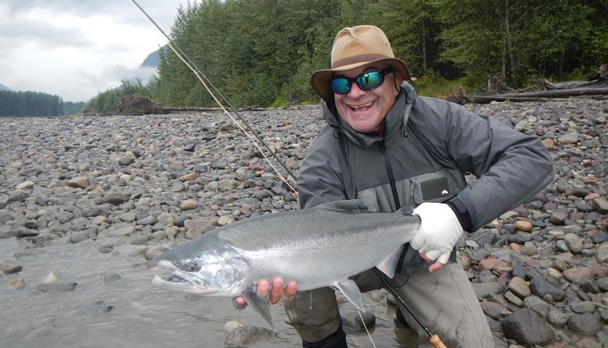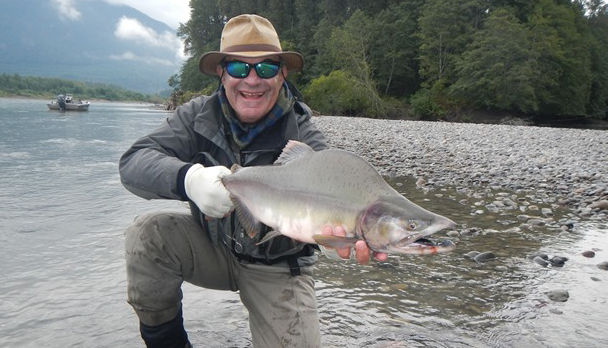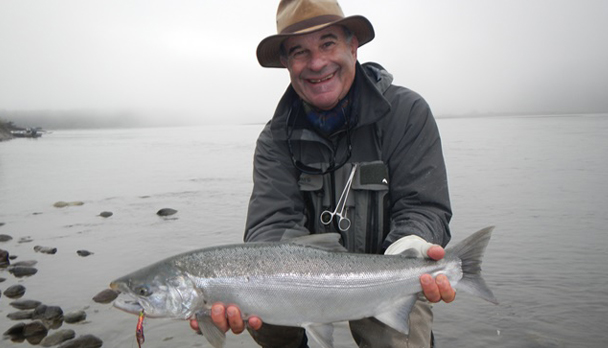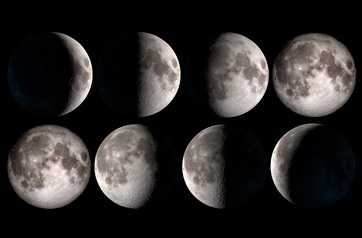testimonials
~ Testimonials ~
A bliss of nature!
FRESHWATER Canada: Terrace / Kalum
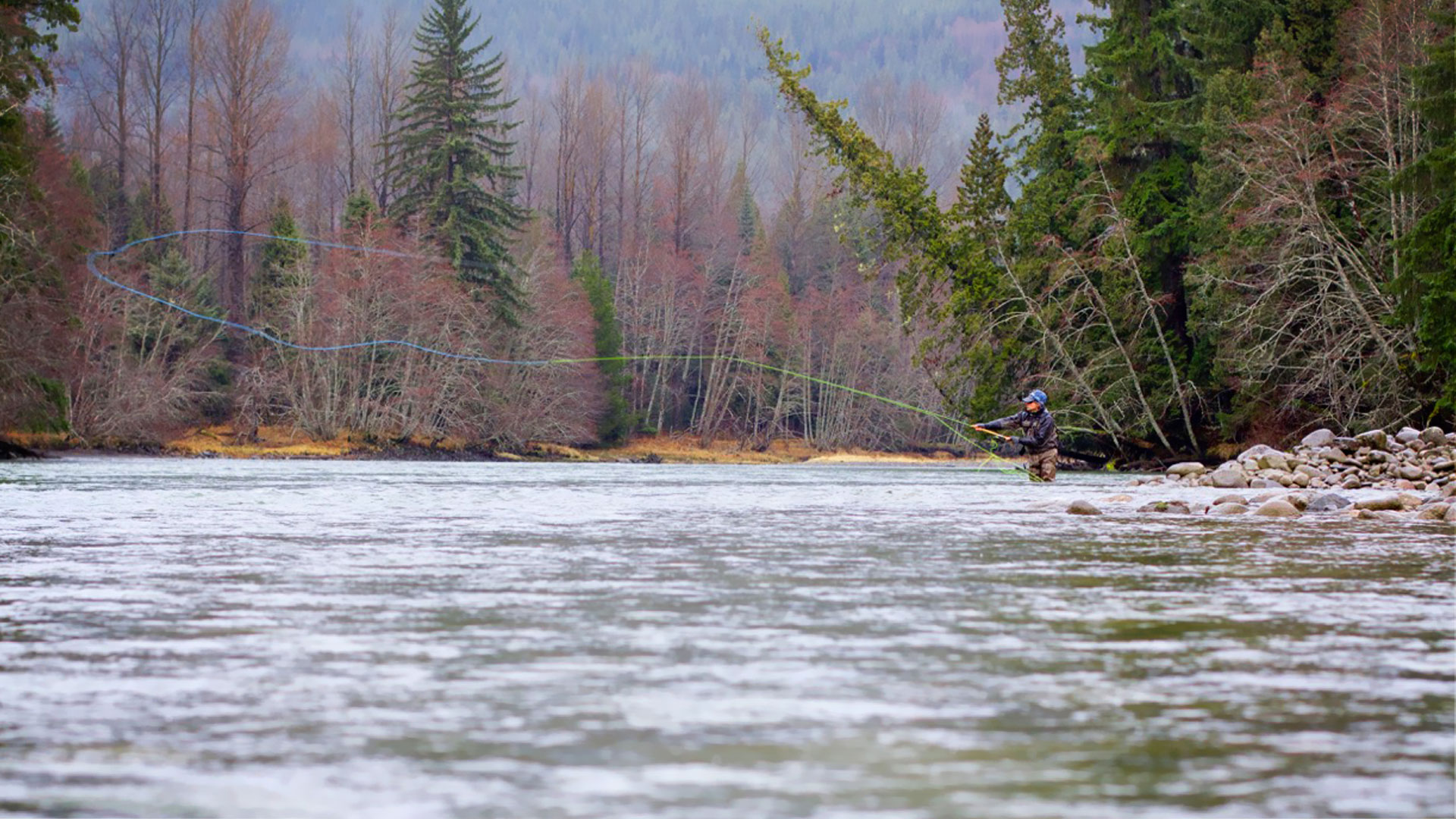
5:30am and it's raining, our first fishing day and we only hear the water drops on the Lodge's roof. It's beginning to clear, but clouds are still low and the mist covers the landscape, our visibility is not further than 100 mts. We are a few kilometers downstream from the town of Terrace, and around 200 mts from the Skeena river. Surprisingly it's not cold, the weather is 55 / 57 Fº.
After breakfast and preparing our lunch, we put the eader on and check for second time our fishing equipment. Guides arrive in different truck with their trailers and lanchas con motor fuera de borda, we complete a for for the fishing license and that's our ritual every single day during our stay.
7.30am finally we're on our to begin pur fishing day, the group gets divided in 2, to fish different zones.
The Skeena river is one of the few ones of Canada that doesn?t have a dam, fishermen, local villagers and conservative associations have struggled for years to avoid any kind of construction that might interfere in the migration of the many millions, yes millions of salmon and Steelhead that come upstream to spawn. The Skeena has more than 600 km length, in which many other rivers and streams such as Kispiox, Cooper, Sustut, etc... known for their Steelhead, tribute.
Before the river fusions with the sea, along its last 70 to 80 km, it becomes quite wide with many channels and sand banks.
As I mentioned before, salmon (Pink, Coho, Chum, Sockeye and Chinook) and Steelhead, go upstream the Skeena river to finish their reproductive cicle and then die, all the Pacific salmon once they spawn die, except the Steelhead which can repeat the same cicle 3 or 4 times before they finally die. This fantastic life and death cicle is what gives this river a very high biologic value, not only for the high Steelhead and salmon reproduction number (over populated) but for its input to the nutritive food chain comformed by bears, bold eagles, wolves and other native species.
Between June and August there's a massive salmon run, heading the quantity list are the Pink, then Sockeye, Chum, Coho and Chinook. It can also be found in the river other salmon such as Bull trout and Dolly Varden.
Skeena is a turbid, greenish river, with a maximum visibility of 1 meter except when it rains which the dicreaseas dramatically. Once in the river, clouds started to dissipate, leaving in evidence the special and spectacular landscape; closed woods, different types of conifer of up to 90 mts high, abrupt mountains with immense blocks of rock at sight and a heavy mist that emerges from the river, giving its magical touch to the view.
During this season, actually during the month of August, the 5 salmon species and the Steelhead as coincidence go upstream at the same time. During the other months, the species vary a bit, less of ones and more of others... so bascally sometimes you don't really know what you've hooked until it's near you. So the type of flie and the leader have to be good for any of these species.
Another characteristic of the summer fishing, is the fact that salmon and Steelhead swim upstream through the river parts with less current , so they don't lose strenght. The water's depth vary between 20 and 50 cm?. It's amazing that fish 10 kgs or more can swim in that shallow water!
Except for some tributaries which alow the use of dry flies (due to their clarity) "skate" over the surface, it is impossible in the Skeena river, allowing exclusively the use of streammers with sinking tippets of diverse density, with a 20 lbs leader. It's pssible to fish with one hand rod (ideally #8 wt), but also a double handed rod suits the ocassion (# 7 / 8 wt of 13 ft).
The fishing techniques in this period requieres a cast between 15 and 20 mts, if possible upstream, starting with a line correction and then leaving the fly drift until you start recovering the line when the drifting is over. In general, most of the bites / hook ups are while finishing the trayectory but sometimes they might surprise you in the middle of it. Flies are "hard" to choose the right ones because literally there are thousand of models, but guides here prefer pink ones, or pink with violet, a bit weighted and very shinny. They also suggest blue with violet and sparkle for Coho salmon and Steelhead. 99% of the flies (sinking) I've seen are articulated.
The style of hook up do not differ very much between the species, since all salmon including Steelhead attack the fly by irritation, so until they don't show a reaction, you don't really know what has bitten. Though many times Coho and Steelhead give a hard battle form the very begining, including jumps and runs, not common in the rest species (Chinook is the exception since it's the strongest one). Since Pink, Sockeye and Chum go upstream in larger quantities, the odds of fishing Coho, Steelhead and Chinook are lower. When you hook one of these last species, it's important not to hurry the landing, sometimes they might give the impression of tyred but they're not and therefore you can lose it.
Another characteristic of this kind of fishery is that they don't stay long in the same spot, they are always going up. This means that if you're in the right spot where fish go through their way up, then you'll fish the whole day without changing place. Usually guides recommend to move, so you get to know other spots of the river and have different experiences everyday.
We had lunch by the river coast, having before us the beautiful scenery of this remote place; high mountains, some peaks still with snow, waterfalls, eagles flying the skies, the water sound mixed with other bird's noises, expecting the appearance of a bear or a deer...
At 5:00pm we returned to the lodge, had dinner by 7:00pm, still under daylight and around 10:00pm we were all sleeping.
The wethear during the following days was more or less the same, but with less rain, lots of clouds, no wind at all and a temperature between 15 and 20 Cº. The only excepction was on thursday, with plenty of sun and not even a cloud. Through our 5 fishing days, among the 5 anglers we travelled, we landed a total of 350 Pink salmon, 28 Coho (being the biggest one of 15,5 lbs), 9 Steelhead (the biggest was 13 lbs), many Bull Trout, some Dolly Varden, a pair of Sockeye and 1 Chum.
British Columbia caused me a very good impression and had a gratefull experience. Its exhuberant nature, rivers and lakes, the majestic glaciers, its varied fauna and rich maritime cost and over all the passion and respect canadians have for their natural environment and its rich resources. It's a destnation that invites to to go backand with no doubt reapeat the particular and intense experience. So if everything goes as planned, next year 2014 we'll be giving more fight to the Coho and Steelhead, in the Skeena and its tributaries!

